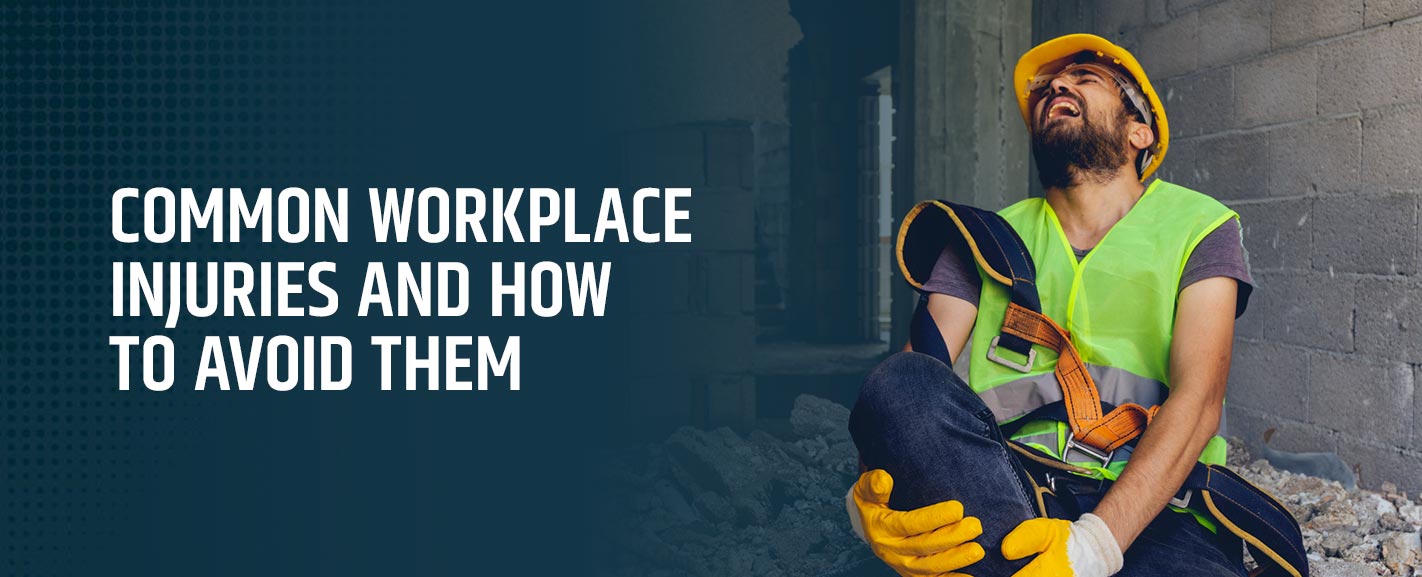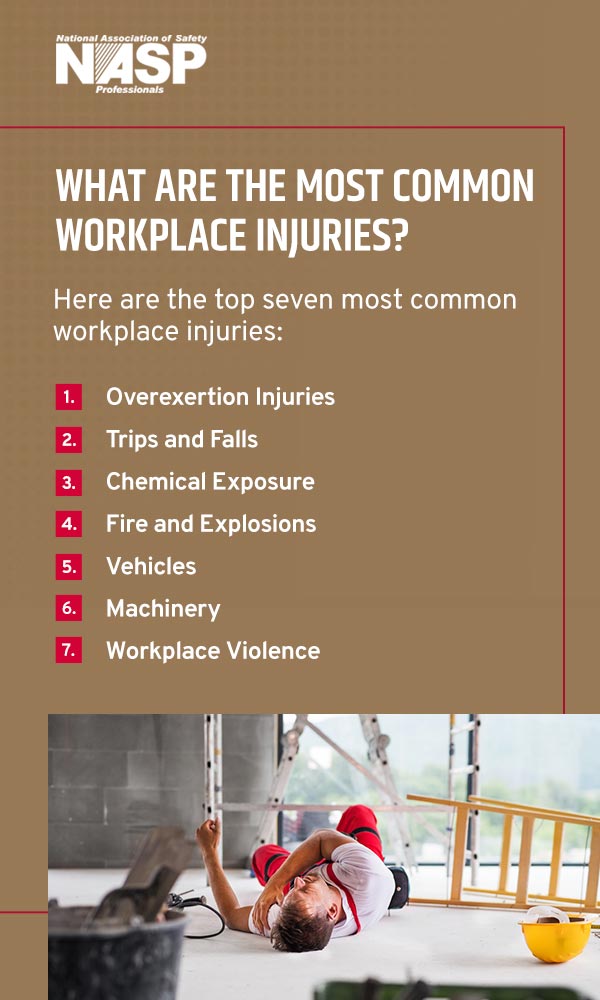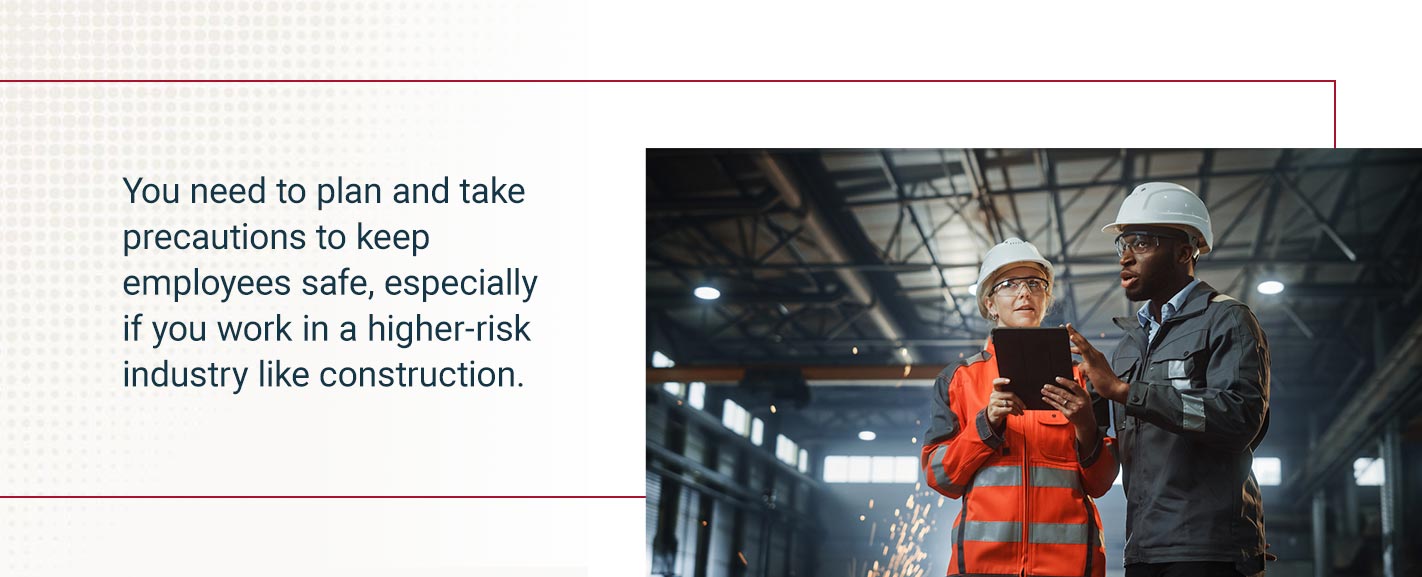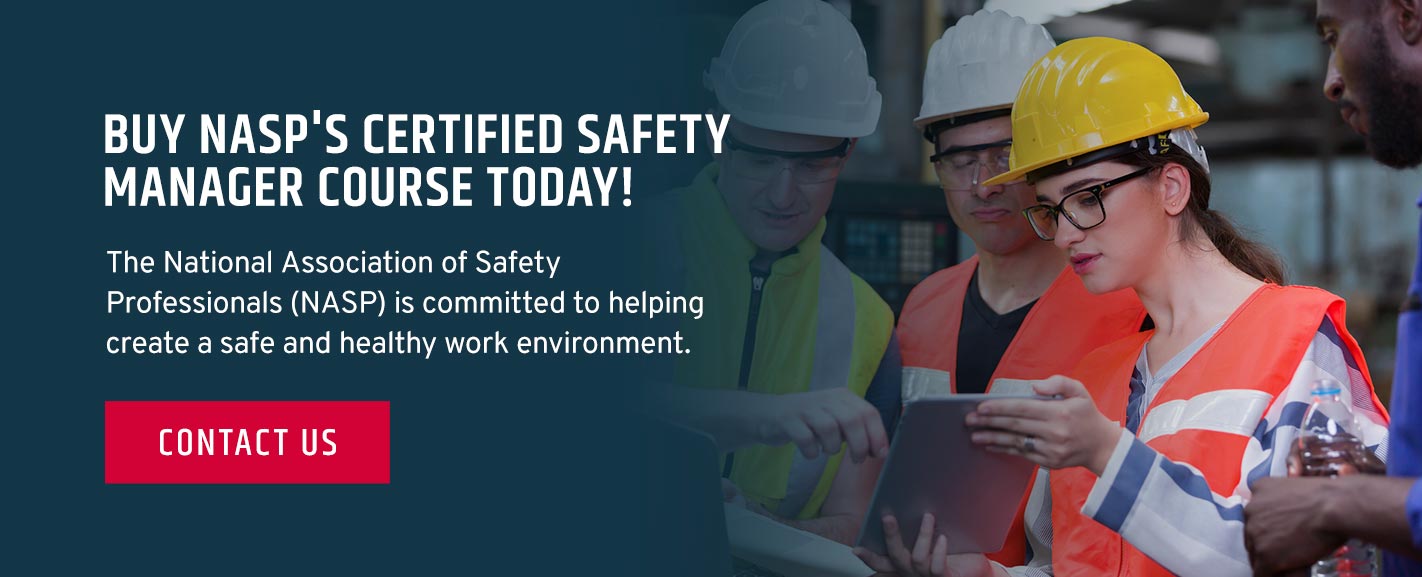Common Workplace Injuries and How to Avoid Them

Workplace injuries significantly impact both the employee and their employer. Experiencing any kind of accident or injury on the job can make workers lose confidence in their role and face unexpected medical bills that strain their finances.
Meanwhile, the reduced workforce often means the company will experience a loss of productivity — and revenue. An employer will likely also face claims from the injury, which can increase insurance rates.
While injuries can happen in any industry, some tend to experience more than others, such as construction, agriculture, manufacturing and health services.
By being aware of common risks and developing a safety culture, you’ll be able to reduce the chances of workplace injuries.
What Are the Most Common Workplace Injuries?
Whether they regularly work with chemicals or have to use heavy machinery, employees could face all kinds of hazardous conditions on the job site every day. It’s important to know the different types of injuries you or your employees could experience.
Here are the top seven most common workplace injuries:
1. Overexertion Injuries
Employees responsible for completing repetitive tasks could face an overexertion injury. These injuries can happen after just one wrong movement or gradually over time from either maintaining the same position or making the same motions over and over.
Whether the injury happens from typing, scanning products or lifting heavy inventory, employees won’t be able to complete their usual tasks and responsibilities. A repetitive use injury could lead to downtime or surgery to heal the affected area.
2. Trips and Falls
Many workplace hazards can cause an employee to trip, slip or fall. Anything from ice covering a sidewalk to oily spills on some steps can create a slick surface that will be difficult to work on. Slipping on these surfaces can lead to injuries like sprains and broken bones.
Employees who use ladders or work on scaffolding can face severe back, neck or head injuries if they fall from such a height.
Due to the conditions and heights where they work, maintenance and construction workers are at an increased risk for these types of injuries.
3. Chemical Exposure
Exposure to chemicals and fumes can cause short- and long-term health issues. Toxic exposure can occur while repairing a gas leak in a neighborhood or manufacturing parts in a large industrial plant. Employees in pharmacies and hospitals could also be exposed to chemicals that put their health at risk.
Chemical exposure can occur through skin and eye contact, inhalation or ingestion. Short-term or acute effects can range from throat irritation to loss of consciousness, while long-term or chronic effects can damage the nervous system or organs.
4. Fire and Explosions
Workplace hazards ranging from gas lines to open flames increase the risks of fire- and explosion-related injuries. These kinds of injuries often involve the respiratory system from breathing in smoke. Severe burns can also occur, causing extensive damage to the skin and internal organs.
Workplace burns and injuries can be divided into:
- Primary blast: These injuries affect the ears, lungs and gastrointestinal tract and are caused by pressure on body tissues.
- Secondary blast: This injury results when flying objects strike an employee.
- Tertiary blast: These powerful explosions can lift employees off the ground.
- Quaternary blast: These injuries involve everything from burns to crush injuries resulting from an explosion.
5. Vehicles
Employees who rely on vehicles to complete their work responsibilities face the risk of injuries caused by collisions and wrecks. Employees ranging from freight drivers to postal workers could experience a vehicle malfunction while out on the road or be struck by another moving vehicle during their shift.
Along with cars, vehicle-related injuries can occur from bikes, watercraft and trains.
6. Machinery
Common workplace injuries often involve some type of heavy machinery. Employees could be using the machinery incorrectly, or something could be wrong with one of the parts, creating a safety hazard.
Because there are moving parts, injuries like burns, crushed fingers and hands or even amputations can occur. Any employee who deals with machinery on the job site is at risk for these types of injuries, especially those who work with construction or farm equipment or in factories.
7. Workplace Violence
Both individuals and animals in the workplace can cause injuries. Employees like landscapers could face insect stings or snake bites. Individuals who work in pet stores, groomers or horse trainers could be bitten, trampled or mauled.
No matter the workplace setting, there’s always the potential for self-harm, sexual assault, shootings and other forms of workplace violence among individuals.
How to Prevent Workplace Injuries
While workplace injuries can be frightening — and expensive — to deal with, you can take steps to minimize the chances that they’ll occur.
Here are some ways to avoid common workplace injuries:
1. How to Prevent Trips and Falls
Slick surfaces and clutter will increase the chances of an employee losing their footing and tripping or falling to the ground. Regularly inspecting your workplace can help you catch potential hazards early on.
When spills occur, set up signs to alert employees to be cautious while walking through or working in the area. Encouraging appropriate footwear and installing safety features like handrails can also help keep employees safe.
2. How to Prevent Overexertion Injuries
If employees perform repetitive motions or lift heavy objects, be sure they receive proper training in the best posture and position for the task. Taking short breaks throughout the workday can provide the body with some relief. Workers can regain some energy, making it easier to maintain a healthy form.
Creating ergonomic workplaces and providing employees with the right equipment for the job can also prevent overexertion injuries.
3. How to Prevent Chemical Exposure Injuries
Employees who work with chemicals must be trained to handle, store and dispose of hazardous substances safely. To keep everyone safe and in compliance, provide the necessary training and personal protective equipment (PPE).
Whether they require goggles, ear protection or respirators, ensure each employee has properly fitting equipment so they can do their tasks safely.
Your facility should also have additional safety features like ventilation so fumes don’t build up inside.
4. How to Prevent Fire Injuries
Provide training sessions so employees understand how to work with explosive chemicals and fire safely.
Your building needs smoke alarms to alert workers of a potential fire and give them time to evacuate. Similarly, you must have fire extinguishers readily available, especially in areas where you use or store chemicals or flammable substances.
Develop and share a fire escape plan and ensure exits are clearly marked.
5. How to Prevent Vehicle Injuries
Whether they’ll be driving a car, bus or delivery truck, make sure employees are trained and understand how to operate the vehicle safely. Review their driving history and perform a background check to ensure they don’t have a record on the road.
Regular drug and alcohol tests can also help prevent intoxication-related crashes. Because accidents can also occur due to vehicle-related malfunctions, keep all vehicles on a maintenance schedule throughout the year.
6. How to Prevent Machinery Injuries
If employees will be working with machinery, they need to understand how to operate the equipment safely. Provide training sessions and manuals so they can read through them before they start using the machinery.
Also, regularly inspect all your equipment to ensure it’s still working as it should and that there aren’t any damaged or missing pieces. Repair or replace damaged components as soon as possible.
Because even the most well-trained employee can experience an accident like pinched body parts or burns when working with heavy machinery, have safeguards in place. Adding machine guards and checking them frequently will help prevent accidental contact and injuries.
7. How to Prevent Workplace Violence
Make sure your entire team knows how to identify and report concerning behaviors. Understand the warning signs that an individual could become violent at work, from violating company policies to bullying other employees.
Document these kinds of behaviors and share your documentation with your human resources (HR) department or the police. It’s always best to err on the side of caution and report warning signs before it’s too late.
The Cost of Workplace Injuries
Workplace injuries can cause widespread effects. If an employee gets injured, they may be out of work for a while, reducing the entire team’s capabilities. Other employees may have to take over their responsibilities, which can mean doing tasks outside their area of expertise.
Even if the injury isn’t severe enough to take time off work, the business will still likely experience a loss of productivity. It may be uncomfortable to work with injuries like a pulled muscle or broken leg. This discomfort could slow an employee down, decreasing their efficiency. Check-ups or doctor’s appointments may take employees away from the workplace.
Having one or more injured employees can have even more of an impact on a business. This can happen when there’s widespread chemical exposure or a fire. Not having a full team will affect how much work gets done daily, potentially decreasing the company’s profitability.
Workplace accidents come at a steep price, costing businesses billions of dollars every year. Whenever there’s an accident or injury, businesses will have to deal with different costs, including:
- Direct costs: No matter the injury, your business will have direct costs, such as a worker’s compensation claim. This cost will go through your insurance agency.
- Indirect costs: Along with direct costs, your business could face a range of indirect costs like fines from the Occupational Safety and Health Administration (OSHA) or an increased premium cost for your worker’s compensation coverage.
Ways to Build a Safety Culture to Avoid Workplace Accidents
No matter what industry you work in, building a safety culture is key to avoiding workplace accidents. You need to plan and take precautions to keep employees safe, especially if you work in a higher-risk industry like construction.
Here’s how you can start building a safety culture:
- Build awareness and understanding: Start by taking time to identify risks in the workplace. By building awareness of hazardous substances or machinery that could lead to an accident or injury, you’ll be better prepared to create an action plan that keeps the entire team safe.
- Lead by example: Managers and executives can play a big part in creating a safety culture in the workplace. When employees see leaders following the safety protocols they ask of their workers, employees can be inspired. Leading by example is an effective way to get employees interested in and compliant with new safety rules and regulations.
- Host meetings and training sessions: Keep your team up to date by regularly hosting meetings and training sessions. Make sure everyone understands the risks and ways to work safely on the job site. Explain how to prevent the most common accidents and injuries and add signage throughout the facility to identify any slick surfaces or hazardous chemicals.
- Offer a reporting program: Make it easy for employees to report any safety concerns or violations by offering a reporting program. Many people feel more comfortable reporting when they can do so anonymously. These kinds of programs will keep everyone alert and accountable.
- Encourage ongoing learning: There’s always something new to learn regarding workplace safety. Whether it’s discovering how to handle and dispose of a certain chemical properly or how to remain OSHA-compliant when working with construction equipment, ongoing learning will benefit employees and the company as a whole.
- Install safety features: Offering PPE like masks, slip-resistant shoes and hard hats will keep your team safe day in and day out. Features like signage or ventilation can help make your workplace safe and compliant.
- Analyze and adjust if needed: Once you create an action plan, review and analyze it regularly. You may need to adjust certain practices or policies or even discard some based on how your safety culture has developed. Keep your employees involved and consider any feedback they provide throughout the process.
Buy NASP’s Certified Safety Manager Course Today!
The National Association of Safety Professionals (NASP) is committed to helping create a safe and healthy work environment. Whether you need workplace safety training for general industry or something more specific like a governmental agency, we have you covered. Discover real-world training built by safety professionals for safety professionals.
Our Certified Safety Manager course will equip you with the knowledge and tools you need to develop a safety program and deliver safety training in the workplace. From covering OSHA-required workplace safety topics to learning how to avoid civil and criminal liability for accidents and injuries, this course will prepare you to succeed.
Ready to learn more about the practical approach to workplace safety? Enroll in the Certified Safety Manager course today!
Blog Posts
Latest Posts
Related Posts







